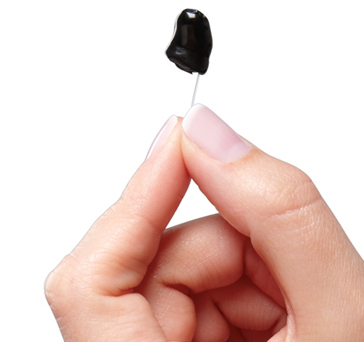
Invisible in the canal (IIC) hearing aids are worn deep in the ear canal, meaning that virtually no one can see them. These aids are good for people with up to moderate hearing loss who don’t want their hearing aids to show.

These aids look very similar to the behind-the-ear hearing aid with a unique difference: the speaker of the hearing aid is placed inside the ear canal, and thin electrical wires replace the acoustic tube of the BTE aid. These aids also offer cosmetic and listening advantages.

Digital hearing aids account for more than 95 percent of hearing aids on the market today. Unlike the analog aids of decades past, these aids do more than just make sound louder. Digital hearing aids process sound waves through computer technology, producing an exact duplication of each sound. As they do so, sound is instantly analyzed and optimized for your specific needs and listing situation – for example, reducing the sound of wind or whistling. The result is an experience closer to natural hearing than ever before..
Hearing aids can differ based on whether they are digital or analog, worn primarily behind the ear or inside it, and are open fit or closed fit. Each of these variations has advantages for some hearing aid wearers, but not others. Learning about the different types of hearing aids available can help you determine which works best for your lifestyle and hearing needs.
The style of a hearing aid refers to where and how it is worn. Understanding the types of hearing aids available before your consultation can give you an idea of the technology that will work best for you. Click on the hearing aids below to learn about each style. Which Type of Hearing Aid Do You Need? The best hearing aid style for you will depend on your hearing loss, concerns about appearance, and other lifestyle concerns. For example, if you have difficulty manipulating small objects, it might be easier to insert a behind-the-ear (BTE) hearing aid rather than an in-the-canal (ITC) one. Working with a trusted Hearing Care Professional is key to selecting the hearing aid style for your lifestyle, hearing needs and budget.
